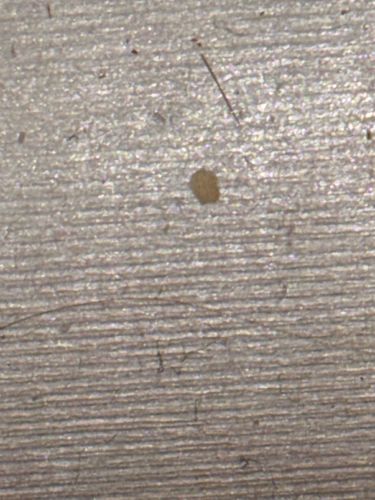Mite (likely an orb/oval-shaped mite egg or a very small mite)
Scientific Name: Not determinable without more detailed morphological features. Could belong to various families within Acari.
Order & Family: Acari (subclass), order and family are not determinable from this image due to lack of detail.
Size: Typically microscopic to a few millimeters in length. The object in the image appears to be less than 1 millimeter.

Natural Habitat
As the image appears to show a tiny, oval-shaped object on a textured surface, possibly a mite egg or a very small mite. Mites can be found in virtually all habitats, including soil, dust, water, plants, and on animals.
Diet & Feeding
Undeterminable from the image; depends greatly on the specific mite species. Could be fungi, decaying organic matter, plants, or other small arthropods.
Behavior Patterns
Mites are generally very small and can be found almost everywhere. They often go unnoticed due to their size. Some mites are parasitic, others are predatory, and many are decomposers. Their life cycles can be complex, involving different developmental stages (egg, larva, nymph, adult).
Risks & Benefits
Potential risks can include being pests to plants, causing allergic reactions in some individuals (e.g., dust mites), or being vectors for diseases (less common for most mites depicted by such an image). Benefits include being decomposers and contributors to soil health, as well as predatory mites that help control pest populations.
Identified on: 9/1/2025